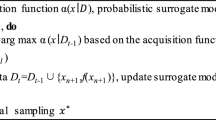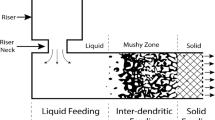Abstract
Optimal parting curve contributes to simplify mold structure, reduce the cost of mold manufacturing and injection production. As it depends on a series of technique, such as undercut feature recognition, mold piece region recognition, parting curve assessment, and etc., optimal parting curve generation is still a complicated and time-consuming task. A hybrid hint-based and fuzzy comprehensive evaluation method is proposed in this paper to recognize mold piece region and generate optimal parting curve for 3D CAD model in injection mold design. The hint topological regions are innovatively defined and classified into three categories: concave-edge region, inner loop region, and isolated surface. Based on this, potential mold piece region is defined and recognized by the surface visibility. Exact region is recognized from the potential mold piece region by the hint derived from adjacency relationship of topological regions. Inexact region is recognized from these topological regions that are not exact regions through their adjacent information. Candidate mold piece region set is then constructed by the combination of exact region and inexact region. Boundary edges of each candidate mold piece region are extracted to form the parting curve scheme set. By using the parting curve evaluation model which is based on fuzzy comprehensive evaluation method, the parting curve with the best assessment result is selected as the optimal scheme. Finally, case study is provided to validate the feasibility and effectiveness of the proposed approach.
























Similar content being viewed by others
Data availability
All data and models generated or used during the study appear in the submitted article.
References
Fu MW, Fuh JYH, Nee AYC (1999) Undercut feature recognition in an injection mould design system. Comput Aided Des 31(12):777–790. https://doi.org/10.1016/S0010-4485(99)00070-6
Zhou H, Shi S, Ma B (2009) A virtual injection molding system based on numerical simulation. Int J Adv Manuf Technol 40(3):297–306. https://doi.org/10.1007/s00170-007-1332-1
Priyadarshi AK, Gupta SK (2004) Geometric algorithms for automated design of multi-piece permanent molds. Comput Aided Des 36(3):241–260. https://doi.org/10.1016/S0010-4485(03)00107-6
Fu MW, Nee AYC, Fuh JYH (2002) The application of surface visibility and moldability to parting line generation. Comput Aided Des 34(6):469–480. https://doi.org/10.1016/S0010-4485(01)00117-8
Ma Y-S, Tor SB, Britton GA (2003) The development of a standard component library for plastic injection mould design using an object-oriented approach. Int J Adv Manuf Technol 22(9):611–618. https://doi.org/10.1007/s00170-003-1555-8
Wong T, Tan ST, Sze WS (1998) Parting line formation by slicing a 3D CAD model. Eng Comput 14(4):330–343. https://doi.org/10.1007/BF01201764
Chen YH, Wang YZ, Leung TM (2000) An investigation of parting direction based on dexel model and fuzzy decision making. Int J Prod Res 38(6):1357–1375. https://doi.org/10.1080/002075400188898
Rubio Paramio MA, Perez Garcia JM, Rios Chueco J, Vizan Idoipe A, Marquez Sevillano JJ (2006) A procedure for plastic parts demoldability analysis. Robot Comput Integr Manuf 22(1):81–92. https://doi.org/10.1016/j.rcim.2005.02.011
Mochizuki T, Yuhara N (1990) Methods of potential undercut extraction and determination of optimum direction of withdrawal for mold designing. J Japan Soc Precis Eng 56(3):491–496
Chen L-L, Chou S-Y, Woo TC (1993) Parting directions for mould and die design. Comput Aided Des 25(12):762–768. https://doi.org/10.1016/0010-4485(93)90103-U
Chen L-L, Chou S-Y, Woo TC (1995) Partial visibility for selecting a parting direction in mold and die design. J Manuf Syst 14(5):319–330. https://doi.org/10.1016/0278-6125(95)98869-8
Hui KC (1997) Geometric aspects of the mouldability of parts. Comput Aided Des 29(3):197–208. https://doi.org/10.1016/S0010-4485(96)00064-4
Yin ZP, Ding H, Xiong YL (2000) Mouldability analysis for near-net-shaped manufactured parts using freedom cones. Int J Adv Manuf Technol 16(3):169–175. https://doi.org/10.1007/s001700050023
Yin Z, Ding H, Xiong Y (2001) Virtual prototyping of mold design: geometric mouldability analysis for near-net-shape manufactured parts by feature recognition and geometric reasoning. Comput Aided Des 33(2):137–154. https://doi.org/10.1016/S0010-4485(00)00084-1
Singh R, Madan J (2013) Systematic approach for automated determination of parting line for die-cast parts. Robot Comput Integr Manuf 29(5):346–366. https://doi.org/10.1016/j.rcim.2013.02.002
Singh R, Madan J, Kumar R (2014) Automated identification of complex undercut features for side-core design for die-casting parts. Proc Inst Mech Eng B J Eng Manuf 228(9):1138–1152. https://doi.org/10.1177/0954405413514744
Yin Z-P, Ding H, Xiong Y-L (2000) Visibility theory and algorithms with application to manufacturing processes. Int J Prod Res 38(13):2891–2909. https://doi.org/10.1080/00207540050117350
Ye XG, Fuh JYH, Lee KS (2001) A hybrid method for recognition of undercut features from moulded parts. Comput Aided Des 33(14):1023–1034. https://doi.org/10.1016/S0010-4485(00)00138-X
Fu MW (2008) The application of surface demoldability and moldability to side-core design in die and mold CAD. Comput Aided Des 40(5):567–575. https://doi.org/10.1016/j.cad.2008.02.002
Lin AC, Quang NH (2014) Automatic generation of mold-piece regions and parting curves for complex CAD models in multi-piece mold design. Comput Aided Des 57:15–28. https://doi.org/10.1016/j.cad.2014.06.014
Bassi R, Reddy NV, Bedi S (2010) Automatic recognition of intersecting features for side core design in two-piece permanent molds. Int J Adv Manuf Technol 50(5):421–439. https://doi.org/10.1007/s00170-010-2524-7
Bassi R, Bedi S (2013) Image processing-based accessibility analysis method for determining undercut-free parting direction. Int J Adv Manuf Technol 69(5):1581–1591. https://doi.org/10.1007/s00170-013-5129-0
Hou B, Huang Z, Zhou H, Li D (2018) A hybrid approach for automatic parting curve generation in injection mold design. Int J Adv Manuf Technol 95(9):3985–4001. https://doi.org/10.1007/s00170-017-1497-1
Joshi S, Chang TC (1988) Graph-based heuristics for recognition of machined features from a 3D solid model. Comput Aided Des 20(2):58–66. https://doi.org/10.1016/0010-4485(88)90050-4
Rahmani K, Arezoo B (2007) A hybrid hint-based and graph-based framework for recognition of interacting milling features. Comput Ind 58(4):304–312. https://doi.org/10.1016/j.compind.2006.07.001
Lin AC, Quang NH (2015) A multiple slicing approach to automatic generation of parting curves. Proc Inst Mech Eng B J Eng Manuf 230(12):2165–2181. https://doi.org/10.1177/0954405415585271
Mercado-Colmenero JM, Paramio MAR, Perez-Garcia JM, Martin-Doñate C (2016) A new hybrid method for demoldability analysis of discrete geometries. Comput Aided Des 80:43–60. https://doi.org/10.1016/j.cad.2016.06.006
Babic B, Nesic N, Miljkovic Z (2008) A review of automated feature recognition with rule-based pattern recognition. Comput Ind 59(4):321–337. https://doi.org/10.1016/j.compind.2007.09.001
Geng W, Chen Z, He K, Wu Y (2016) Feature recognition and volume generation of uncut regions for electrical discharge machining. J Adv Eng Softw 91:51–62. https://doi.org/10.1016/j.advengsoft.2015.10.005
Fu MW, Ong SK, Lu WF, Lee IBH, Nee AYC (2003) An approach to identify design and manufacturing features from a data exchanged part model. Comput Aided Des 35(11):979–993. https://doi.org/10.1016/S0010-4485(02)00160-4
Banerjee AG, Gupta SK (2007) Geometrical algorithms for automated design of side actions in injection moulding of complex parts. Comput Aided Des 39(10):882–897. https://doi.org/10.1016/j.cad.2007.05.014
Guh Y-Y, Hon C-C, Lee ES (2001) Fuzzy weighted average: the linear programming approach via Charnes and Cooper's rule. Fuzzy Sets Syst 117(1):157–160. https://doi.org/10.1016/S0165-0114(98)00333-9
Funding
This study was funded by the Key-Area Research and Development Program of Guangdong Province (Grant No. 2019B090918001).
Author information
Authors and Affiliations
Contributions
Dequn Li and Huamin Zhou conceived the idea; Zhigao Huang and Binkui Hou conducted the analyses; all authors contributed to the writing and revisions.
Corresponding author
Ethics declarations
Conflict of interest
The authors declare that they have no conflict of interest.
Code availability
All code generated or used during the study appears in the submitted article.
Additional information
Publisher’s note
Springer Nature remains neutral with regard to jurisdictional claims in published maps and institutional affiliations.
Rights and permissions
About this article
Cite this article
Hou, B., Huang, Z., Zhou, H. et al. A hybrid hint-based and fuzzy comprehensive evaluation method for optimal parting curve generation in injection mold design. Int J Adv Manuf Technol 112, 2133–2148 (2021). https://doi.org/10.1007/s00170-020-06461-w
Received:
Accepted:
Published:
Issue Date:
DOI: https://doi.org/10.1007/s00170-020-06461-w




